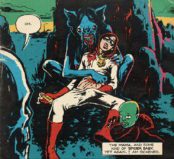[dropcap style=”font-size:100px; color:#992211;”]A[/dropcap]nd close your eyes with holy dread
The growing availability of heroin, combined with programs aimed at curbing prescription painkiller abuse, may be changing the face of opiate addiction in the U.S., according to sociologists.
While heroin abuse is still relatively rare, the use of the drug is not only increasing, but it is now being coupled with the abuse of prescription painkillers, said Shannon Monnat, assistant professor of rural sociology, demography, and sociology, Penn State. She added that the heroin-prescription drug combination is also hitting groups that were not traditionally viewed as widespread opiate users.
“One of the things we’ve found is that the simultaneous use of heroin and prescription painkillers together has increased dramatically among whites and especially among young white men,” said Monnat, who worked with Khary K. Rigg, assistant professor of mental health law and policy, University of Southern Florida.
Monnat described the recent trend as a domino effect of addiction that began in the 1980s and 1990s when the over-prescription of painkillers led to an increase in addiction to those drugs.
“Over the last several years there have been more restrictions put in place, including prescription-drug monitoring programs and the introduction of a tamper-proof opioid, making it difficult to crush, liquefy and inject the substance,” said Monnat. “What this has done is restrict access to prescription painkillers for people who previously became addicted to them. These people sometimes transition into heroin, which has become incredibly cheap and easily accessible.”
Some addicts who were introduced to heroin also turn to abusing both painkillers and heroin at the same time. While most opiate addicts are still addicted to only painkillers, the number of addicts using heroin and the number of users who are addicted to both painkillers and heroin are increasing faster than painkiller-only abusers.
“You don’t eliminate the addiction simply by eliminating access to the drug,” said Monnat. “People who are addicted to the morphine substance will find a substitute.”
The three groups of opiate abusers are distinct demographically, socioeconomically and psychologically, Monnat added. While heroin abuse is typically characterized as being a problem in black, poor and urban areas, an increasing number of heroin and painkiller-heroin addicts are white, employed and live in rural and small urban areas.
The researchers, who released their findings in Addictive Behaviors, currently online, said that people who are addicted to painkillers alone tend to be the most socially connected of the three groups. Painkiller addicts are also the least socioeconomically disadvantaged and have better physical and mental health.
Professionals who treat drug addiction should recognize the unique needs of each group of addicts, according to the researchers.
“It’s not enough to know whether someone is just using a prescription painkiller, but the practitioner would also want to know if they are using heroin,” Monnat said. “The use of heroin puts the patient at risk of all kinds of other complications, such as HIV and sexual risk-taking behaviors and a very high risk of overdose.”
The researchers used data from the 2010-2013 National Survey on Drug Use and Health. Respondents in the survey were grouped in three categories: heroin only users, prescription painkiller only users, and combination heroin and prescription painkiller users. Prescription painkiller-only users were the largest group, with 9,516 respondents. Combination heroin and prescription painkiller users were the next largest group, with 506 respondents, followed by 179 heroin-only respondents.
Source: Eurekalert/Penn State
Image: iTenz

Some of the news that we find inspiring, diverting, wrong or so very right.



















